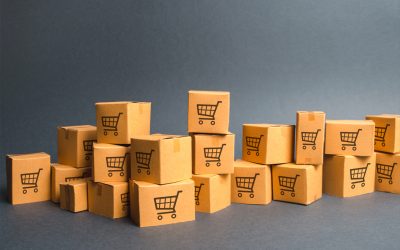Over the past decade, subscription ecommerce has moved from being a niche offering to a mainstream business model adopted across multiple industries. From streaming platforms and digital learning services to meal kits, health supplements, grooming products, and even luxury fashion rentals, consumers are increasingly drawn towards recurring, personalised and hassle-free purchasing. By 2026, subscription ecommerce is forecast to experience another wave of expansion, driven by technological advancements, evolving consumer behaviour, and a rapidly maturing digital economy. This article explores the reasons why subscription ecommerce will be on the rise in 2026, and what businesses can do to prepare for the growing demand.
1. Changing Consumer Behaviour and Expectations
Modern consumers are shifting away from traditional patterns of ownership and one-off purchases. Instead, they increasingly value convenience, consistency and the ability to personalise their experiences. Subscriptions align perfectly with these expectations, offering:
- Convenience: Automated deliveries of essential goods, from groceries to toiletries, remove the need for repetitive shopping.
- Consistency: Predictable access to favourite products or services provides peace of mind and saves time.
- Personalisation: Subscription services often use data to tailor recommendations, ensuring customers feel understood and catered to.
By 2026, younger generations such as Gen Z and even the emerging Gen Alpha will be at the forefront of consumer spending. These digital-first cohorts are far more comfortable with ongoing service relationships and recurring payments than previous generations. Their preference for seamless, on-demand experiences will accelerate subscription adoption across retail and digital sectors.
2. Economic Uncertainty and Budget Management
Global economic conditions are expected to remain unpredictable throughout the mid-2020s. Inflationary pressures, fluctuating energy costs and ongoing supply chain volatility will all influence consumer spending. In this context, subscription models become attractive because they provide:
- Predictable monthly costs, which help households manage budgets.
- Savings through bundling, as subscription businesses often incentivise customers with discounts over time.
- Protection from price shocks, since many subscriptions lock in prices for a set period.
Businesses can also benefit from economic uncertainty by shifting from volatile one-off sales to recurring revenue, giving them greater resilience and long-term forecasting ability. By 2026, this mutual advantage will make subscriptions a more prominent part of the retail and service economy.
3. Advancements in Technology and Data
Technology will be a key driver of subscription growth. By 2026, artificial intelligence, machine learning and automation will further refine the ability of businesses to offer highly personalised subscription experiences. Examples include:
- AI-driven recommendations that anticipate customer needs before they realise them.
- Automated logistics that streamline supply chains, ensuring timely deliveries.
- Smart devices that integrate with subscriptions, such as fridges re-ordering groceries or printers automatically ordering ink.
Data analytics will also empower businesses to continually optimise their offerings. Rather than delivering generic subscription boxes, companies will be able to predict precisely what each individual consumer is likely to need or want. This level of personalisation will reduce waste, improve satisfaction and keep cancellation rates low.
4. Sustainability and Ethical Consumption
Sustainability is no longer a side consideration—it is becoming central to consumer decision-making. Subscriptions can support greener and more ethical consumption patterns in several ways:
- Reduction of waste: Predictive stock management minimises overproduction and unnecessary shipping.
- Encouragement of reuse and circular economy models: Clothing rental subscriptions, for example, extend the lifecycle of garments.
- Sustainable packaging and delivery: Many subscription brands now invest in recyclable materials and carbon-neutral logistics.
By 2026, pressure from both consumers and regulators will push companies to demonstrate genuine sustainability credentials. Subscription models, with their predictable and optimisable supply chains, are well placed to lead the way in this area.
5. Expansion Beyond Traditional Sectors
Until recently, subscription ecommerce was most visible in categories such as beauty, food, entertainment and fitness. However, the coming years will see a far broader adoption across industries. Likely growth areas include:
- Healthcare and wellness: Vitamins, prescriptions and health monitoring services delivered through subscription.
- Automotive: Vehicle access and mobility-as-a-service subscriptions rather than traditional ownership.
- Fashion: Rotation of clothing and accessories to reduce fast fashion consumption.
- Education and skills: Lifelong learning delivered through personalised subscription platforms.
- Home and utilities: Smart home device services, energy packages and appliance maintenance.
The diversification of subscription models across both consumer and business-to-business (B2B) sectors will be a defining feature of the 2026 digital economy.
6. Evolution of B2B Subscription Models
While consumer subscriptions receive most of the media attention, B2B subscription ecommerce is expected to grow even faster by 2026. Businesses will increasingly subscribe to tools, services and consumables rather than purchase them outright. Examples include:
- Software as a Service (SaaS), already a standard model, continuing to evolve into highly specialised vertical offerings.
- Equipment leasing and maintenance for industries that prefer not to commit to high upfront capital expenditure.
- Raw material and supply replenishment subscriptions, which reduce procurement complexity.
- Professional services, such as legal, accounting or marketing, packaged into flexible subscription models.
The B2B sector values predictability and operational efficiency, both of which subscriptions deliver. By 2026, businesses themselves will be driving demand for increasingly sophisticated subscription solutions.
7. The Power of Communities and Brand Loyalty
Subscription services do more than deliver goods or services; they often foster communities and ongoing relationships with brands. Consumers who subscribe feel part of a club or movement, which deepens brand loyalty. Many businesses use this to create:
- Exclusive content or products available only to subscribers.
- Community events or online forums that build shared identity.
- Gamified reward systems that incentivise engagement and reduce churn.
By 2026, the brands that thrive will be those able to combine high-quality subscriptions with community-driven loyalty programmes, ensuring that customers feel valued beyond the transaction.
8. Regulatory and Payment Innovations
As subscription ecommerce matures, regulatory frameworks and payment innovations are evolving to support growth. By 2026, expect to see:
- Stronger consumer protections ensuring transparent pricing and easy cancellation, which will increase trust.
- Flexible payment methods, including digital wallets, cryptocurrency integrations and buy-now-pay-later (BNPL) structures adapted to recurring payments.
- Cross-border subscription models facilitated by streamlined tax and shipping solutions.
These changes will reduce friction for consumers and businesses alike, making subscription adoption more accessible on a global scale.
9. The Shift Towards Experiences Over Ownership
Perhaps the most significant cultural driver for subscriptions is the shift in values from ownership to access. Younger consumers, in particular, prioritise experiences, flexibility and minimalism over accumulating goods. Subscription models provide access without the burden of ownership, whether it is music, films, software, cars or even household goods. By 2026, this mindset will be firmly embedded, making subscriptions the default option in many sectors.
10. Competitive Advantage for Businesses
Finally, subscription ecommerce will rise in 2026 because it offers businesses a competitive advantage they cannot ignore:
- Recurring revenue streams stabilise cash flow and enable strategic growth.
- Deeper customer insights from ongoing relationships lead to better product development.
- Lower customer acquisition costs since existing subscribers generate repeat sales without needing to be re-won.
- Opportunities for upselling and cross-selling, integrated directly into the subscription journey.
As more companies adopt the model, those who do not risk falling behind competitors who benefit from more predictable revenue and stronger customer loyalty.
Conclusion
By 2026, subscription ecommerce will no longer be considered an alternative or supplementary model but a core part of global retail and service strategies. Shaped by consumer demand for convenience, personalisation and sustainability, underpinned by technological advancements and supported by shifting cultural values, subscriptions are set to rise across both B2C and B2B markets.
For businesses, the challenge is not whether to adopt subscription models but how to do so in a way that aligns with their brand, operations and customers. Those who innovate and embrace the model early will gain a decisive advantage in a world where access, convenience and long-term relationships define success.









